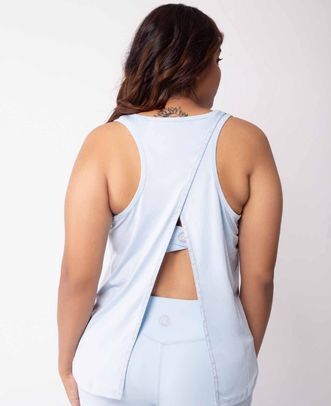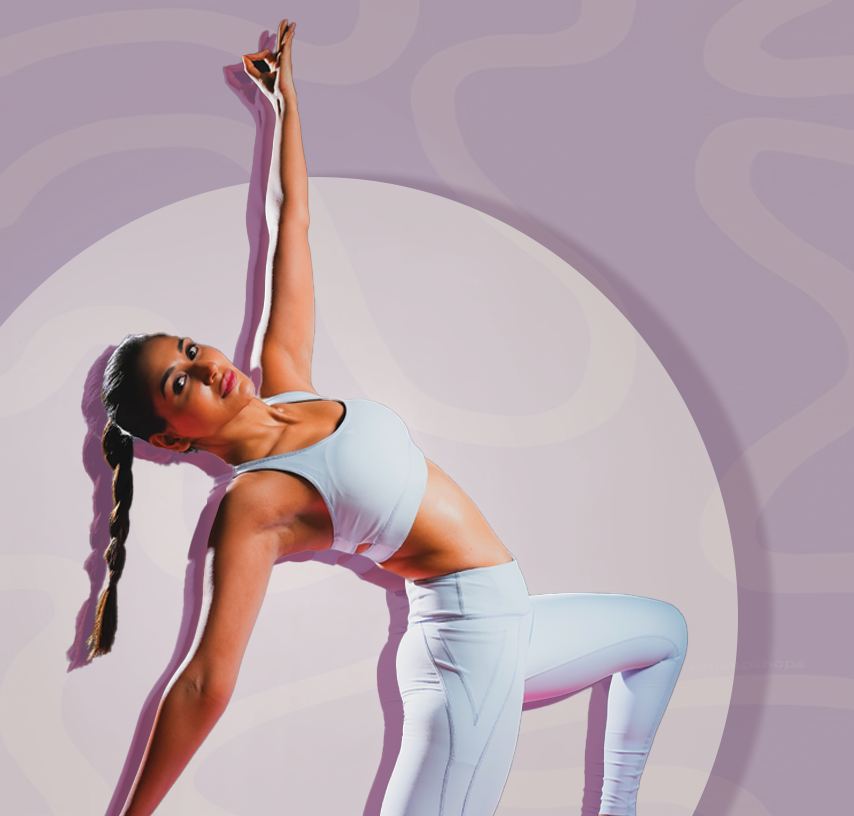salabhasana, also known as the locust pose, is a yoga posture that is widely practised in various forms of yoga. this asana is a back-bending pose that can be challenging for some, but its benefits are numerous. salabhasana is mentioned in several ancient yoga texts, including the hatha yoga pradipika and the gheranda samhita. salabhasana is a challenging but beneficial yoga posture that can improve strength, posture, digestion, and overall health and well-being.
always make sure to listen to your body and not push beyond your limits while practising the locust pose. always consult with a qualified yoga teacher before attempting any new posture, and make sure to modify or skip the posture if you have any injuries or medical conditions that may be aggravated by the posture. with patience, dedication, and proper guidance, the locust pose can be a rewarding addition to your yoga practice.
what is salabhasana?
salabhasana is a backbend pose that can help counteract the effects of sitting for long periods and improve posture. there are several variations of salabhasana, including ardha salabhasana (half locust pose), purna shalabhasana (full locust pose), and viparita salabhasana (inverted locust pose).
the word "salabhasana" is derived from two sanskrit words: "salabha," which means "locust" or "grasshopper," and "asana," which means "posture" or "seat." therefore, salabhasana is commonly translated as "locust pose" or "grasshopper pose." the name of the posture is derived from the resemblance of the pose to a locust or grasshopper with its body lifted off the ground. in addition, the sanskrit word "salabha" is also associated with strength, power, and agility, which are qualities that can be cultivated through the regular practice of this pose.
who can do salabhasana yoga?
salabhasana is generally safe for most individuals, regardless of their age or fitness level. it is particularly beneficial for those who spend a lot of time sitting or working in a sedentary position, as it helps to strengthen the muscles in the back, legs, and arms.
it is important to note that salabhasana should be practised with proper alignment and technique to avoid injury. it is recommended to practice under the guidance of a qualified yoga teacher who can provide proper instruction and modifications as needed.
who should avoid locust pose?
salabhasana, also known as the locust pose, is a yoga asana that offers many benefits to the body and mind. however, there are certain groups of people who should avoid this posture or practice it with caution.
-
firstly, individuals who have recently undergone surgery, particularly on the back or neck, should avoid this posture until they have fully healed. this is because salabhasana can place pressure on the surgical site, which can impede the healing process and potentially cause further injury.
-
pregnant women should also avoid this posture, particularly in the later stages of pregnancy, as it can put pressure on the abdomen and potentially harm the developing fetus. it is important for pregnant women to consult with their healthcare provider before beginning any new exercise routine, including yoga.
-
those with chronic back pain or injuries should approach salabhasana with caution and consult with a qualified yoga teacher or healthcare provider before attempting the posture. this is because salabhasana can be challenging for the lower back and can potentially exacerbate existing injuries or conditions.
-
individuals with high blood pressure or heart disease should also avoid salabhasana, as the posture can increase blood flow to the head and potentially exacerbate these conditions.
it is important and recommended to practice under the guidance of a qualified yoga teacher who can provide proper instruction and modifications as needed. practising with proper alignment and technique under the guidance of a qualified yoga teacher can help ensure a safe and effective practice.
salabhasana yoga procedure
here is a step-by-step guide on how to perform salabhasana:
-
lie on your stomach with your chin resting on the floor and your arms by your sides. take a deep breath and relax.
-
as you exhale, lift your legs, chest, and head off the floor. keep your arms straight and parallel to the ground, palms facing downwards.
-
engage your buttocks and thighs to lift your legs as high as possible. keep your toes pointed and your knees straight.
-
as you inhale, lift your head and chest higher, and gaze forward. make sure not to strain your neck, and keep your shoulders relaxed.
-
hold the posture for 5-10 breaths, or for as long as comfortable. focus on breathing deeply and evenly.
-
to release the posture, exhale and slowly lower your legs, chest, and head back down to the floor.
-
rest for a few breaths before repeating the posture.
if you follow these steps properly, you will perfect the asana in no time. don’t forget to wear soft, breathable and stretchable yoga clothes to make the asana easier. if you are looking for new and reasonably-priced athleisure wear, do give asana a try. they make some of the best and most stylish clothes for yoga that allow ease of movement, are moisture-wicking and are made of soft, sustainable and recyclable materials.
here are some tips to follow while practising the salabhasana steps:
-
it is important to engage the core muscles while performing salabhasana to avoid putting too much strain on the lower back.
-
if you have tight shoulders or a stiff neck, you can interlace your fingers behind your back and lift your arms along with your chest and legs.
-
if you find it difficult to lift your legs, you can start by lifting one leg at a time, or by placing a folded blanket or towel under your hips for support.
-
avoid practising salabhasana if you have recently undergone surgery, are pregnant, or have chronic back pain or injuries.
with these steps and tips in mind, you can ace salabhasana very soon and reap its many benefits in your day-to-day life.
benefits of shalabhasana
you will be surprised to know the shalabhasana benefits and miracles that the yoga pose has in store for you. here are some of the advantages of practising shalabhasana:
-
strengthens the muscles: one of the major salabhasana benefits is that it strengthens the muscles of the back, legs, and buttocks. this can help improve posture, prevent injury, and increase overall physical strength.
-
stimulates the organs: this posture can stimulate the digestive organs, including the liver and intestines, which can help improve digestion and reduce constipation.
-
improves circulation: shalabhasana can increase blood flow to the lower back and legs, which can help alleviate pain and reduce the risk of injury.
-
enhances flexibility: this posture can help stretch and lengthen the muscles of the back and legs, improving flexibility and reducing tension.
-
relieves stress and anxiety: shalabhasana can promote relaxation and reduce stress levels. the deep breathing associated with this posture can help calm the mind and reduce feelings of anxiety.
-
improves posture: regular practice of shalabhasana can help improve posture by strengthening the muscles of the back and improving alignment.
-
boosts energy: this posture can help increase energy levels by improving circulation and stimulating the nervous system.
-
reduces lower back pain: shalabhasana can help alleviate lower back pain by strengthening the muscles that support the lower back.
-
reduces lower back pain: shalabhasana can help alleviate lower back pain by strengthening the muscles that support the lower back
shalabhasana is a beneficial yoga posture that can improve strength, flexibility, and posture while also promoting relaxation and reducing stress levels. with regular practice and proper alignment, this posture can help enhance overall physical and mental health.
level of difficulty
the locust pose, also known as salabhasana can be challenging for beginners and advanced practitioners alike. the level of difficulty can vary depending on a person's level of strength, flexibility, and experience with yoga. here are some factors that can affect the level of difficulty for the locust pose:
-
strength
: salabhasana requires a lot of strength, particularly in the muscles of the back, legs, and buttocks. people who have weaker muscles in these areas may find the posture more challenging. -
flexibility
: this posture also requires a certain level of flexibility, particularly in the muscles of the back and legs. people who have tight muscles in these areas may find it difficult to lift their legs and chest off the ground. -
experience with yoga
:experience with yoga: practitioners who have more experience with yoga may find salabhasana easier to perform, as they may have developed the necessary strength and flexibility over time. -
modifications
:the difficulty level of the locust pose can be modified by using props such as a folded blanket or towel under the hips for support or by lifting one leg at a time instead of both legs simultaneously.
overall, the locust pose can be considered a moderate level of difficulty posture. it requires a significant amount of strength and flexibility, but with practice and proper alignment, it can be performed by most practitioners.
beginners may need to start with modifications or shorter holds of the posture before gradually building up to the full posture. advanced practitioners may choose to deepen the pose by adding variations or holding it for longer periods of time.
easy modification for beginners
for beginners, the full expression of this pose can be challenging to achieve. fortunately, there are some easy modifications that can be incorporated into the practice to make it more accessible and comfortable. here are a few modifications that beginners can try for the locust pose:
-
use props:
one of the easiest ways to modify the locust pose is to use props such as a folded blanket or a block. by placing the props under the hips or the legs, you can make the pose more comfortable and accessible. the props can provide additional support to the body, making it easier to lift the chest and legs off the ground.
-
lift one leg at a time:
modification for the locust pose is to lift one leg at a time. this variation can help build strength in the legs and the back while reducing the strain on the lower back. begin by lifting one leg off the ground and holding for a few breaths, then switch to the other leg. gradually, you can work towards lifting both legs at the same time.
-
use a partner:
practicing the locust pose with a partner can be helpful for beginners. the partner can provide support and assistance, making it easier to lift the chest and legs off the ground. the partner can also give feedback on the alignment and help to ensure that the pose is performed safely.
-
shorten the hold:
beginners may find it challenging to hold the locust pose for an extended period. in this case, it can be helpful to shorten the duration of the pose. begin by holding the pose for a few breaths and gradually work up to longer holds as strength and flexibility improve.
-
practice on an incline:
if lifting the chest and legs off the ground is difficult, you can try practising the locust pose on an incline. this can be achieved by placing a cushion or a folded blanket under the upper body, allowing the chest to be lifted more easily.
modifications can make the locust yoga pose more accessible for beginners, allowing them to safely build strength and flexibility in the back and legs. it is important to listen to your body and not push beyond your limits while practicing this posture.

































